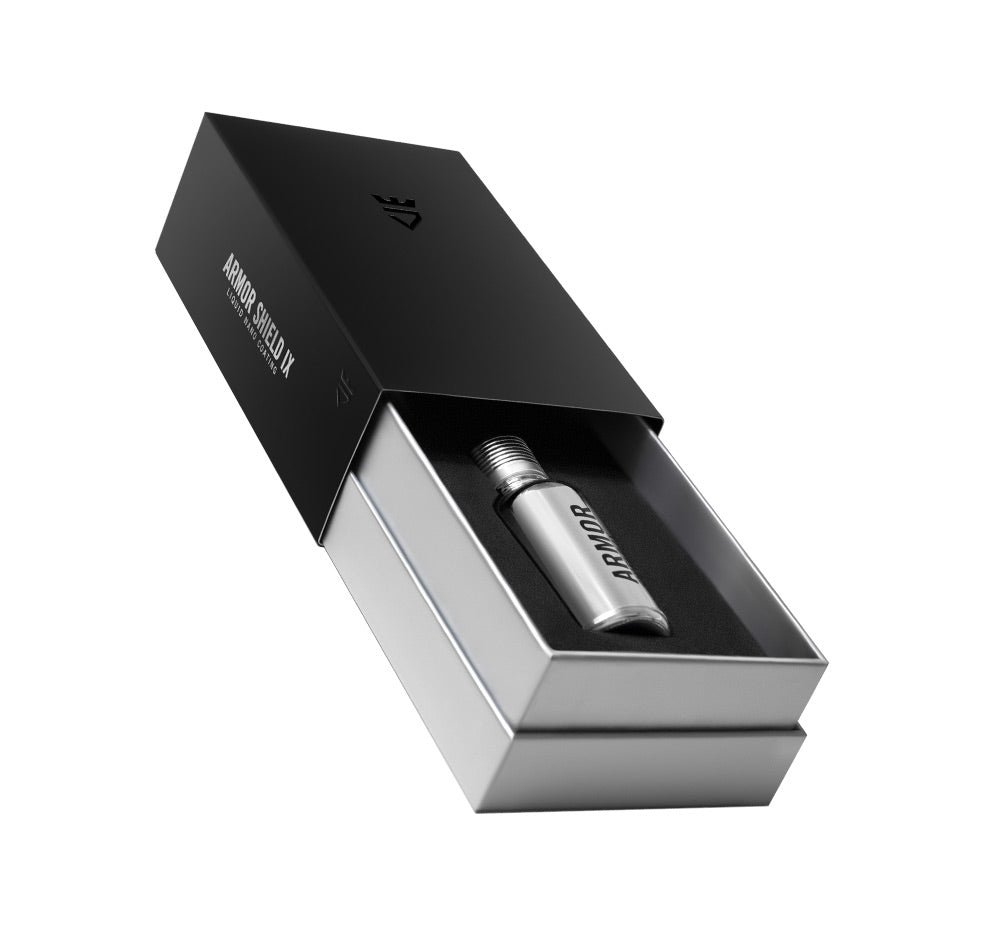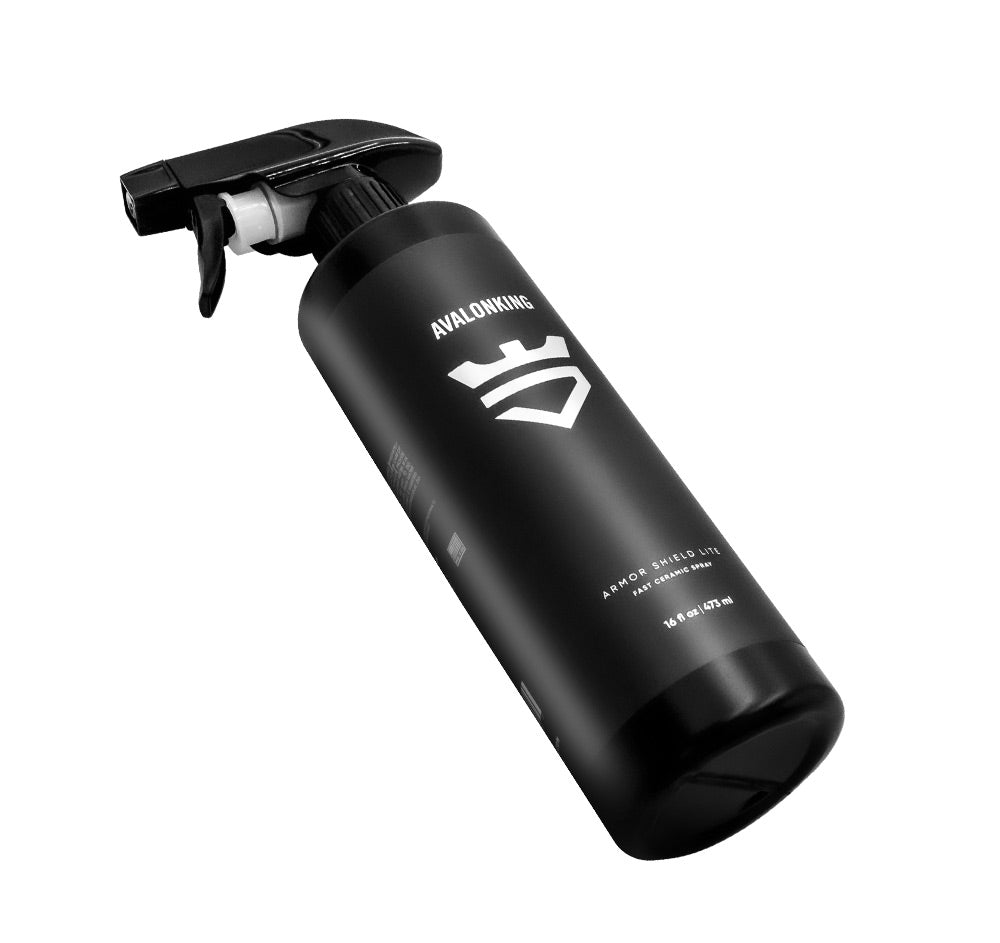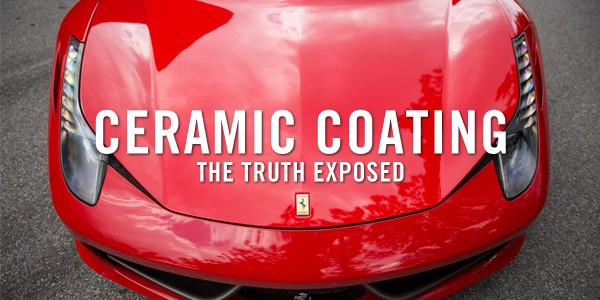Detailing a car on one’s own is an experience that can be fraught with danger, especially for the inexperienced and misinformed.
But while novice detailing mistakes come with a certain level of leniency, a blatant disregard for the rules (and common sense) warrants both chastisement and exaggerated face-palm action.
Although very few people are dumb enough to use something like rotating water-powered brushes to clean their cars, there are quite a few other face-palm-inducing forms of scouring media we see being implemented entirely too often.
Here are ten of the dumbest and potentially dangerous detailing trends that for one reason or another, people continue to dabble in.
1. Polishing With Entirely Too Much POWER

Photo Credit: Rightlook/Facebook
We all know that rubbing/cutting compounds have long been used to remove surface contamination, scratches, oxidation, UV damage, and other forms of visually unappealing matter from an automobile’s exterior.
But the trend of grabbing an all-purpose cutting compound, and then hitting a car’s exterior with everything you’ve got needs to stop. Using too aggressive of a compound on a vehicle’s paintwork can royally screw up your clear coat or worse, the paint and primer underneath it.
Instead, grab a multi-pack of polishing compounds in various strengths, and start with a light car polish before anything else. The microscopic abrasives found within modern polishes are outstanding at removing scratches, so start with the mild stuff, for it may deliver the results you require, and thus negate the need to move on to coarser grit compounds.
2. Crappy Claying Etiquette

Photo Credit: Pan The Organizer/YouTube
The process of claying a vehicle is essentially the removal of embedded contaminants from a surface via the use of clay decontamination media. Unfortunately, people often forget (or decide to skip) clay lubrication, a crucial addition that allows the decontamination product to safely slide across a vehicle’s exterior.
While using any old lubricant you can get your hands on may work in a pinch, it will likely cause more issues than solutions.
Quick Tip: While you should never reuse an old clay bar, synthetic clay mitts and towels can be rinsed and reused, with higher end products offering up to fifty uses on average.
3. Using Intense Chemicals

By now, pretty much everyone knows not to use household cleaning products like dish soap on automobile components. But household cleaners aren’t the only chemicals posing a risk to your vehicle.
Utilizing a car cleaning product with an intense pH level to cut the crud caked onto your car comes with a warning, because if you aren’t careful you may end up cutting a lot more than the crap on your front bumper.
Things like wheel cleaners, degreasers, bug and tar removers, and interior detailing sprays are notorious for damaging and/or discoloring automotive paint and plastics. Not only is the acid-rich nature of these products risky for things like clear coat and surface protectants, but it also leaves undetectable chemical trails in its wake, which can continue to eat into a surface for weeks thereafter.
Quick Tip: To achieve a pH-neutral rating of 7 on the pH scale, always wash your vehicle with pH-balanced car shampoo soap. Once the vehicle has been fully dried, conduct a thorough isopropyl alcohol (IPA) wipe-down with a properly blended IPA Prep Spray for a 100% contaminant-free surface.
4. Too Much Protectant in ALL the Wrong Places

While it may not be dangerous for your car, applying oil-rich, shine-enhancing products to areas like dashboards will only cause your windshield to develop a gross film once all of those oils heat and evaporate up onto the glass. On the other gear, slathering a shine enhancer on your steering wheel, shift knob, hand brake, and floor pedals can be extremely dangerous, as it drastically reduces grip.
When applying a protectant, a thin coat typically goes a long way, which explains why one 30ml bottle of AvalonKing’s Armor Shield IX can coat most medium-sized automobiles. And while up to two layers of nano-ceramic coating can be applied, throwing anything past that at a vehicle is just a waste of time, money, energy, and resources.
5. Not Applying Enough Protection or Any Protection

On the opposite end of the pendulum swing, is the trend of not applying enough surface protectant, or any at all for that matter! May it be laziness, frugality, or a false belief that a smidge of protectant and a prayer is all that’s needed is just downright foolish.
We won’t get too deep into the details, but if you are looking to keep your vehicle’s paint, glass, plastic, and other non-rubberized, cloth, or leather component protected and looking slick, be sure to check out our ultimate guide to nano-ceramic coatings. There’s a reason why Armor Shield IX remains the highest-rated DIY ceramic coating on the market.
6. Grabbing the Wrong Gear

Of all the dumbass things people do, scrubbing their vehicle with any old scouring material that’s sitting around is about as dumb and dangerous as it gets. Steel wool, dish brushes, kitchen scouring pads, magic erasers, chamois cloths, paper towels, and pressure washers set to “kill” should never come into contact with automotive surfaces.
It’s not just clear coatings and paint that are at risk here either. May they be large or small, replacing a piece of automotive glass is never an inexpensive task, so stick with the plush chenille wash mitts and multi-purpose microfiber towels for damage-free detailing every time.
Quick Tip: Neither a wheel brush nor a tire brush should ever be used on anything other than what’s contained with your vehicle’s wheel wells. A separate bucket should also be reserved just for wheels, tires, wheel well plastics, brake calipers, and other grimy havens for brake dust.
7. Hasty Detailing

Ever wonder why a professional auto detailing job takes hours to complete? It’s not just because the detailer is being methodical, but because cleaning chemicals require ample amounts of time to complete their intended tasks.
Rushing the job at hand by attempting to cut corners will only lead to shorter longevity ratings, or worse yet, having to conduct the process all over again. So if you want to see results, follow those instructions on the label, and detail that ride right the first time.
8. Applying Products Directly Onto a Vehicle

There are numerous social media “influencers” who like to apply cleaning and/or a detailing products directly to a vehicle’s exterior, all in the hopes of achieving maximum visual impact. Actions such as these are how stupid shit like the “Tide Pod Challenge” got started, as millions of easily influenced people suddenly start imitating what they see.
So unless the instructions for a product say “apply directly to the surface,” do your ride a solid, and skip the theatrics by applying those chemicals to a microfiber cloth or cleaning tool instead.
9. Blending Different Detailing Supplies

Realizing that you’re unable to complete an auto detailing job because you are out of a particular chemical sucks. Do you know what sucks more? Creating a hazmat suit situation by blending an incompatible chemical with whatever is left in that bottle.
Not only is mixing cleaning and detailing supplies potentially hazardous for your ride, but it can be dangerous for your health as well. Stick with a single product, and always take stock before beginning a detailing job to avoid costly chemical mishaps or last minute runs to the store.
10. Opting to Air Dry

Apparently some people have never heard of water spots. Even the purest water source on the planet will leave little smudges and rings of residue on a vehicle if not removed in a timely fashion. Opting to allow even the cleanest water to air dry atop a freshly scrubbed vehicle is only going to cause you to wash it all over again.
Eliminate unsightly water spots and clear coat etching minerals by toweling your vehicle off immediately after rinsing is complete. While you can apply a ceramic coating to a surface for increased beading and water sheeting, a nano-ceramic coating will not prevent water spots from forming, but instead makes them far easier to remove.
Parting Shots

Well, there you have it, folks. Ten of the most common mistakes and idiotic car detailing trends imaginable. All of which should be avoided, and if possible, erased from your memory bank to prevent permanent damage to brain and automobile alike.
On that note, I’m off to go hit my ride’s exterior surfaces with some AvalonKing SiO2 Ceramic Boost Spray and an ultra-plush microfiber buffing towel before this next rainstorm roles through. You’d be amazed by how well this inexpensive yet extremely effective routine works to keep a car looking crisp and clean.












